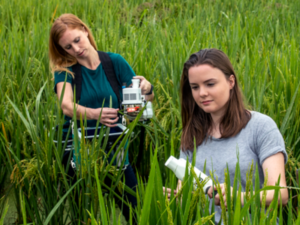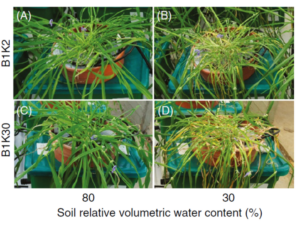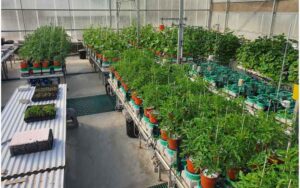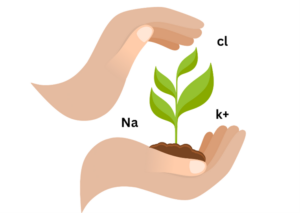Climate change is one of the most critical issues facing humanity in the 21st century. It is a complex phenomenon that has the potential to profoundly impact our planet and all life forms inhabiting it. This 1000-word essay aims to provide an overview of climate change, its causes, consequences, and the urgent action required to address this global challenge.
To comprehend climate change, we must first recognize its primary driver: the accumulation of greenhouse gases (GHGs) in the Earth’s atmosphere. Human activities, including the burning of fossil fuels, deforestation, and industrial processes, have significantly increased GHG emissions, particularly carbon dioxide (CO2). These gases act as a blanket, trapping heat within the atmosphere and leading to a phenomenon known as the greenhouse effect.

Causes of Climate Change: Understanding the Drivers of Global Warming
Greenhouse Gas Emissions:
The primary cause of climate change lies in the accumulation of greenhouse gases (GHGs) in the Earth’s atmosphere. Human activities have significantly increased the levels of these gases, including carbon dioxide (CO2), methane (CH4), and nitrous oxide (N2O). These GHGs act as a heat-trapping blanket, preventing the escape of heat from the Earth and causing the planet to warm.
Fossil Fuel Combustion:
Burning fossil fuels, such as coal, oil, and natural gas, is a major contributor to GHG emissions. These fuels are extensively used for electricity generation, transportation, and industrial processes. The combustion of fossil fuels releases large quantities of CO2 into the atmosphere. This CO2, once emitted, remains in the atmosphere for an extended period, contributing to the greenhouse effect and global warming.
Deforestation and Land Use Changes:
The clearing of forests, primarily for agriculture, urbanization, and timber extraction, is another significant cause of climate change. Forests act as carbon sinks, absorbing CO2 from the atmosphere through photosynthesis. Deforestation disrupts this natural process, releasing stored carbon back into the atmosphere and reducing the Earth’s capacity to absorb CO2. Additionally, land use changes, such as converting forests into agricultural
Agriculture and Livestock:
Agricultural practices, particularly in the livestock sector, contribute to climate change through various mechanisms. Enteric fermentation in livestock, primarily cattle and sheep, releases methane, a potent GHG. Additionally, the use of synthetic fertilizers in agriculture can lead to the release of N2O, another potent GHG. Deforestation for agricultural expansion and the drainage of wetlands for cultivation also contribute to GHG emissions.
Industrial and Household Waste:
Improper management of industrial and household waste can contribute to climate change. Landfills, where waste decomposes in the absence of oxygen, produce significant amounts of methane. Methane emissions from landfills can be reduced through improved waste management practices such as methane capture and utilization.
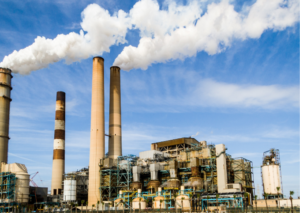
Urbanization and Transportation:
The rapid growth of urban centers and the increasing demand for transportation have resulted in higher energy consumption and GHG emissions. Urbanization leads to increased energy needs for buildings, transportation infrastructure, and increased vehicle usage. The burning of fossil fuels for energy and transportation in urban areas contributes to CO2 emissions and exacerbates climate change.
Understanding the causes of climate change is crucial in formulating effective strategies to mitigate its impacts. The combustion of fossil fuels, deforestation, industrial processes, agricultural practices, and waste management are key drivers of GHG emissions and global warming. Addressing these causes requires a comprehensive approach, including transitioning to renewable energy sources, promoting sustainable land-use practices, improving waste management, and adopting cleaner technologies in industries and transportation. Only through concerted global efforts can we mitigate the causes of climate change and safeguard our planet for future generations.
When was the initial recognition of the climate change issue?
The acknowledgment of the problem of climate change can be traced back to the late 19th and early 20th centuries. However, it was not until the 1970s that climate change gained significant attention and recognition as a global issue.
In the early 19th century, scientists such as Joseph Fourier and Svante Arrhenius proposed the concept of the greenhouse effect, suggesting that certain gases in the atmosphere could trap heat and lead to a warming effect on the Earth’s surface.
In the 1950s and 1960s, scientists began to conduct research on carbon dioxide levels and their potential impact on climate. In 1957, Roger Revelle and Hans Suess published a scientific paper highlighting the potential consequences of increasing CO2 emissions from human activities.
Why was the 1970s a turning point for the recognition of climate change?
However, it was the 1970s that marked a turning point in the recognition of climate change as a significant issue. In 1972, the United Nations Conference on the Human Environment held in Stockholm brought international attention to environmental concerns, including the potential impacts of climate change.
In 1988, the Intergovernmental Panel on Climate Change (IPCC) was established by the United Nations and the World Meteorological Organization to assess scientific research on climate change and its potential consequences. The creation of the IPCC further solidified the global recognition of climate change as a pressing problem.
Since then, numerous international agreements and conferences, such as the United Nations Framework Convention on Climate Change (UNFCCC) in 1992 and the Paris Agreement in 2015, have aimed to address climate change and mitigate its impacts. While the acknowledgment of climate change as a problem dates back over a century, it was during the 1970s and subsequent decades that it gained widespread recognition and became a topic of global concern and action.
What are the steps we as humanity are taking to eradicate the problem of climate change?
Renewable energy and clean technologies
Renewable energy and clean technologies have emerged as critical pillars in the global fight against climate change. This subject encompasses a wide range of topics and advancements that aim to transition our energy systems toward sustainability while reducing greenhouse gas emissions. Let’s explore this subject in more detail:
Solar Energy: Solar power harnesses the sun’s energy through photovoltaic (PV) systems or concentrated solar power (CSP) plants. It involves the installation of solar panels to convert sunlight into electricity, offering a reliable and abundant source of renewable energy.
Wind Energy: Wind turbines capture the kinetic energy of the wind and convert it into electricity. This subject covers the design, efficiency, and integration of wind farms, exploring both onshore and offshore wind power generation.
Hydropower: Hydropower utilizes the energy of flowing water to generate electricity. This subject delves into the development of hydroelectric plants, tidal and wave energy technologies, and the environmental considerations associated with hydropower projects.
Biomass and Bioenergy: This subject focuses on the utilization of organic matter, such as agricultural waste, forestry residues, and dedicated energy crops, to produce biofuels, biogas, and bioenergy. It examines the sustainability of plants biomass feedstocks and explores advanced conversion technologies.

Geothermal Energy: Geothermal power harnesses heat from the Earth’s subsurface to generate electricity or provide heating and cooling solutions. This subject explores the exploration, drilling techniques, and utilization of geothermal resources for sustainable energy production.
Energy Storage: Energy storage technologies play a crucial role in enabling the integration of intermittent renewable energy sources into the grid. This subject examines various storage technologies, including battery systems, pumped hydro storage, and emerging innovations in grid-scale energy storage.
Smart Grids and Energy Management: Smart grids integrate advanced communication and control technologies into power systems, enabling efficient energy distribution, demand response, and the seamless integration of renewable energy sources. This subject explores grid modernization, energy management systems, and the concept of energy flexibility.
Carbon Capture, Utilization, and Storage (CCUS): CCUS technologies capture CO2 emissions from power plants and industrial facilities, either for storage underground or for utilization in industrial processes. This subject investigates carbon capture techniques, storage options, and the potential for carbon utilization in creating value-added products.
Energy Efficiency and Demand-Side Management: This subject emphasizes the importance of reducing energy demand through energy-efficient technologies, building design, and behavior change. It covers topics such as energy audits, energy-efficient appliances, and strategies for demand-side management.
Green Buildings and Sustainable Infrastructure: This subject explores sustainable building design, green construction materials, energy-efficient building systems, and the integration of renewable energy technologies into the built environment. It also encompasses sustainable urban planning and the development of resilient and low-carbon infrastructure.
Carbon Footprint and Emissions Reduction: Towards a Low-Carbon Future
subject involves quantifying greenhouse gas emissions associated with various activities and entities. It includes methodologies for calculating carbon footprints, such as life cycle assessment (LCA), which considers emissions across the entire lifecycle of a product or service.
Energy Conservation: This aspect focuses on reducing energy consumption through efficient technologies, behavior change, and optimizing energy use in buildings, industries, and transportation. It explores energy audits, energy-efficient appliances, lighting, insulation, and efficient transportation systems.
Renewable Energy Adoption: Emphasizing the shift towards renewable energy sources, this subject explores the integration of solar, wind, hydro, and geothermal power to reduce reliance on fossil fuels. It examines policies, incentives, and strategies for promoting renewable energy deployment at various scales.
Circular Economy and Waste Management: Addressing waste generation and its associated emissions, this aspect focuses on waste reduction, recycling, composting, and sustainable material management. It explores the principles of the circular economy, aiming to minimize waste and maximize resource efficiency.
Sustainable Agriculture and Food Systems: This subject examines emissions from agricultural activities, including livestock production, deforestation, and fertilizer use. It explores sustainable agricultural practices, regenerative farming, precision agriculture, and reduced food waste to mitigate emissions throughout the food supply chain.
Policy and Governance: This subject examines policies, regulations, and international agreements aimed at emissions reduction. It includes carbon pricing mechanisms, cap-and-trade systems, and the role of governments, businesses, and individuals in adopting sustainable practices and meeting emission reduction targets.
Green Building Design and Energy Efficiency: Focusing on the construction sector, this aspect explores energy-efficient building design, green materials, and sustainable construction practices. It covers certifications like LEED (Leadership in Energy and Environmental Design) and energy management systems for optimizing building performance.
Climate Communication and Education: Empowering Change Through Awareness and Knowledge
climate communication and education plays a vital role in addressing climate change by fostering awareness, understanding, and engagement among individuals, communities, and societies. This subject delves into various effective strategies, public awareness campaigns, and educational initiatives aimed at raising awareness about climate change and promoting climate literacy.
Communication Strategies: Develop effective communication techniques to convey complex climate science in a clear and accessible manner. exploring methods such as storytelling, visualizations, and engaging narratives to communicate the urgency, impacts, and solutions related to climate change.
Public Awareness Campaigns: This subject delves into the development and implementation of targeted campaigns to raise public consciousness about climate change. It includes initiatives that promote behavior change, encourage sustainable practices, and highlight the interconnectedness between climate change and other pressing issues, such as social justice and economic development.
Science Communication: the need to bridge the gap between scientists, policymakers, and the general public. It explores effective ways to translate scientific research into understandable and relevant information, ensuring that scientific findings are communicated accurately and comprehensibly to various audiences.
Engaging Stakeholders: This aspect focuses on fostering collaboration and engagement among diverse stakeholders, including policymakers, businesses, educators, community leaders, and civil society organizations. It explores participatory approaches, multi-sector partnerships, and inclusive dialogue to facilitate collective action and decision-making on climate-related issues.
Digital Platforms and Media: With the rise of digital media, the role of online platforms raised. social media, and digital storytelling in climate communication. It explores the potential of these tools to reach wider audiences, facilitate knowledge sharing, and mobilize collective action for climate solutions.
Youth Engagement: Recognizing the power of youth voices in driving change, this subject explores initiatives that empower young people as climate advocates and agents of change. It includes youth-led movements, educational programs, and platforms for amplifying youth perspectives in climate communication.
Climate Journalism: This aspect focuses on the role of journalism in reporting on climate change, raising awareness, and holding stakeholders accountable. It explores ethical considerations, investigative reporting, and the responsibility of media in fostering informed public discourse.
Plant Response to Climate Change: Adapting in a Changing World
Climate change poses significant challenges to the world’s ecosystems, including the plant kingdom. As the Earth’s climate continues to warm, plants are experiencing various impacts that affect their growth, distribution, and overall functioning.
With changing climatic conditions, plants may need to migrate to more suitable habitats. As temperatures increase, plant species are often observed moving towards higher latitudes or elevations in search of cooler conditions. However, the ability of plants to shift their ranges depends on various factors, including dispersal capabilities and the availability of suitable habitats.
In addition, Plants play a crucial role in the global carbon cycle by sequestering carbon dioxide through photosynthesis. Changes in plant growth, distribution, and species composition can affect the amount of carbon stored in ecosystems. Understanding how climate change influences carbon sequestration is essential for predicting future climate dynamics and developing effective mitigation strategies.
The responses of plants to climate change have far-reaching implications for ecosystem services. Forests, for instance, provide numerous benefits, including carbon storage, water regulation, and habitat provision. Changes in tree species composition and distribution can disrupt these services, impacting biodiversity, water resources, and human livelihoods.
What are the plant physiological responses to climate and environmental change?
Stress and Adaptation: Plants face increased stress under changing climatic conditions. Heatwaves, droughts, and extreme weather events can damage plant tissues, reduce photosynthesis, and compromise overall fitness. However, plants have evolved various mechanisms to cope with these stresses, such as adjusting their stomatal conductance to optimize water use efficiency and producing heat shock proteins to protect cellular structures.
Changes in Species Interactions: Climate change can also disrupt intricate relationships between plants and other organisms. For example, changes in the timing of flowering can lead to a mismatch between plants and their pollinators or seed dispersers. This disruption can have cascading effects on ecosystem dynamics, affecting both plant reproduction and the animals that rely on them
Genetic Adaptation: Climate change may exert selection pressures on plant populations, driving genetic adaptation over time. Genetic variations within plant populations allow certain individuals to better tolerate or respond to changing conditions. Natural selection favors those traits that enhance survival and reproduction, potentially leading to the evolution of more resilient plant populations.
Altered Growth and Productivity: Rising temperatures, changes in precipitation patterns, and increased carbon dioxide (CO2) levels can impact plant growth and productivity. Some studies suggest that elevated CO2 concentrations may stimulate plant growth initially, known as the “CO2 fertilization effect.” However, other factors such as water availability and nutrient limitations can influence the overall response.
How the PlantArray can help researchers to find the most suitable plant according to the climatic changes?
PlantArray is an advanced system that accelerate research and to assist researchers in identifying the most suitable plants for specific climatic conditions. The system simulates conditions of dryness, salinity and lack of nutrients and enables learning in real time the physiological response of the plants under the various treatments and how the productivity and growth of the plants is affected by the various environments. And all this within a few days instead of entire seasons. This enables researchers to make informed decisions regarding plant selection and adaptation and, thereby, providing solutions to the market faster than ever
The PlantArray system by Plant Ditech is a high-throughput phenotyping system that includes sensors and monitoring devices to gather extensive data on environmental parameters such as temperature and relative humidity. This allows researchers to create a detailed profile of the climatic conditions under investigation.
By subjecting the collected data to statistical analysis and visualization techniques, researchers can compare plant responses, detect patterns, and obtain valuable insights regarding the plants that are more likely to flourish in the face of specific climatic changes.


